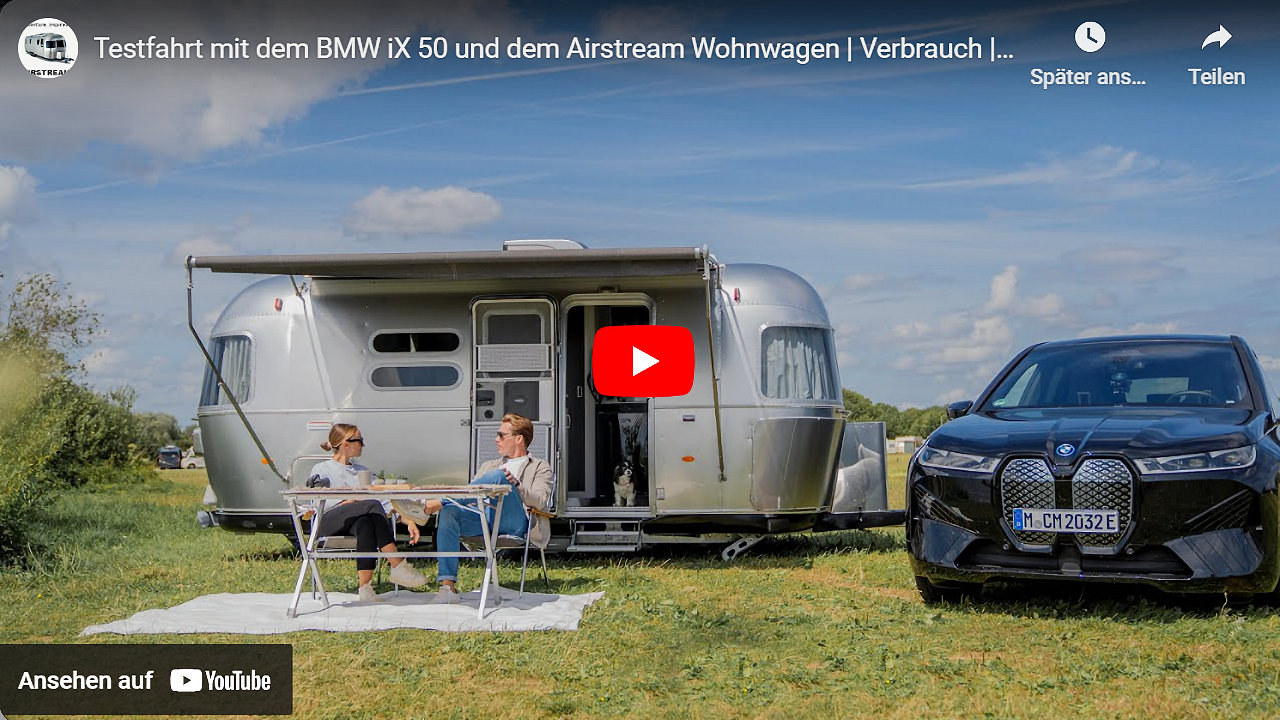It's time again to try something new. This time we have chosen a BMW iX xDRIVE50 as towing vehicle and would like to test it in combination with an Airstream 534 on a short trip to Holland.
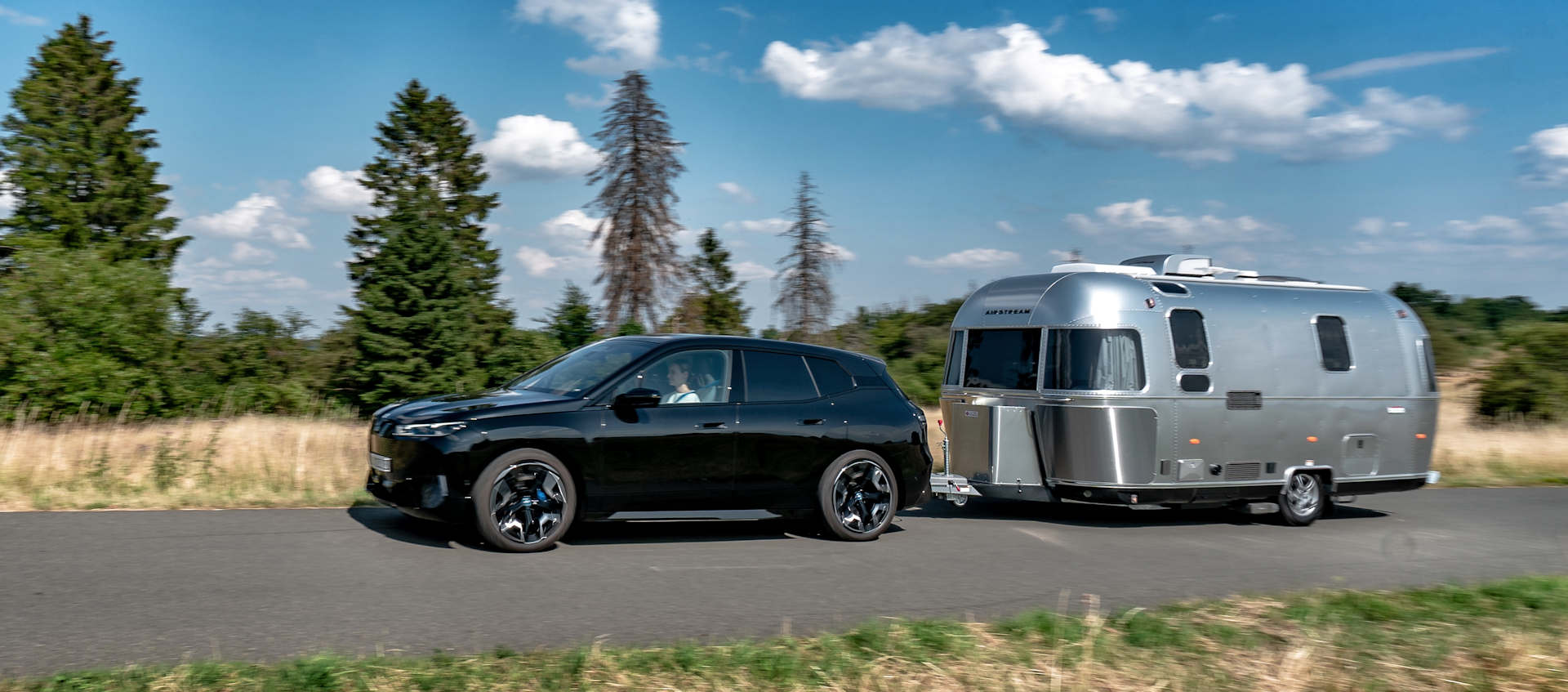
The maximum towing capacity of the BMW iX xDRIVE50 is 2500KG. This makes it currently the most powerful electric towing vehicle officially offered on the European market. With its 105-kWh battery, it achieves a WTPL range of up to 633KM, depending on the equipment. From the outside, we are greeted by a typical BMW SUV with a clear resemblance to the well-known BMW X5. Somewhat more streamlined and without the usual open radiator grille, it presents itself as a full-blown towing vehicle even for larger caravans. The interior is typical BMW: sporty, luxurious and visually inviting for comfortable travel. In contrast to the American competition from California, the Bavarian manufacturer offers a nice selection of different materials and colors for its interior. The material and workmanship quality is worlds above what one is used to from conventional electric vehicles, and shows that German manufacturers still know their trade in this respect. But BMW also makes you pay for that. BMW offers the BMW iX xDRIVE50 from 107,900 euros including VAT. Our test car with absolute full equipment costs about 134,000 euros. The performance data is also beyond doubt. With 523 hp and 765NM torque, the driver has more than enough power at his disposal. Now the question arises as to how such a vehicle performs in reality.
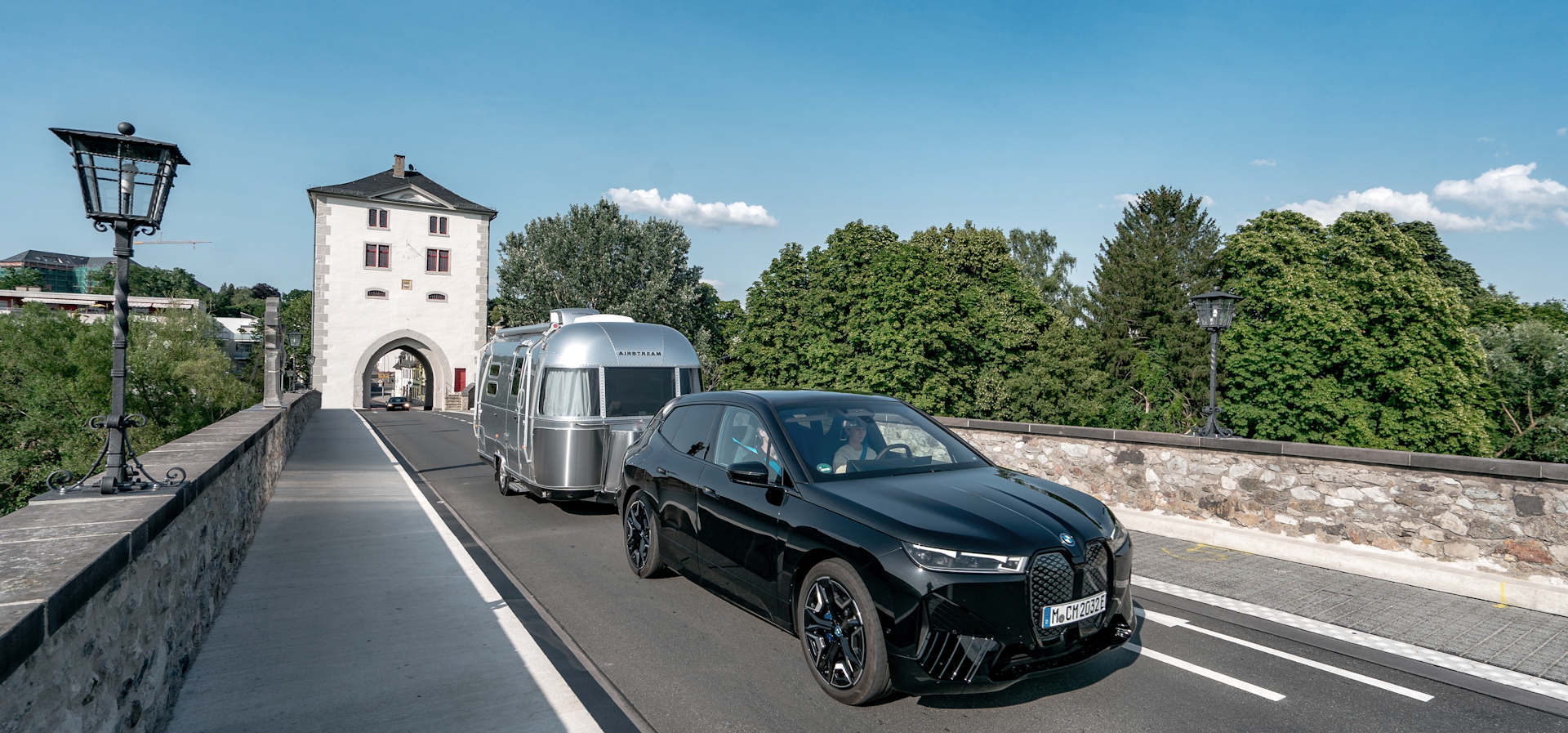
Our planned short trip takes us from the showroom of Airstream Germany in Merenberg via Limburg an der Lahn, to Zandvoort in the Netherlands to Camping de Lakens. There we have booked a "lounge spot" in the dunes for two days. On the way back, we would like to have a 3-day stay at Camping Hattenboer in Roermond to recharge both our biological and automotive batteries and explore the city. So for the journey, we are looking at 408 KM or about 5 hours of driving. In previous electric train vehicle tests, we learned not to just drive off at random, but to plan the charging stops with the help of apps like "A better Routeplanner" or simply Google Maps.
In order to get used to the new vehicle and to determine the consumption values, we chose one of the most beautiful charging parks in Germany, only 160 km away, for our first charging stop. At Seed and Greet in Hilden, you'll find not only several hitchhiking lanes, but also a modern restaurant with healthy treats and comfortable seating. For us, this is the right address for a quick stop for lunch. After the initial nervousness has subsided somewhat, we start to familiarize ourselves with the technical features of the BMW iX xDRIVE50. While the display behind the steering wheel shows information such as speed, driving distance, range and consumption, the central screen provides information for multimedia, telephone and navigation.
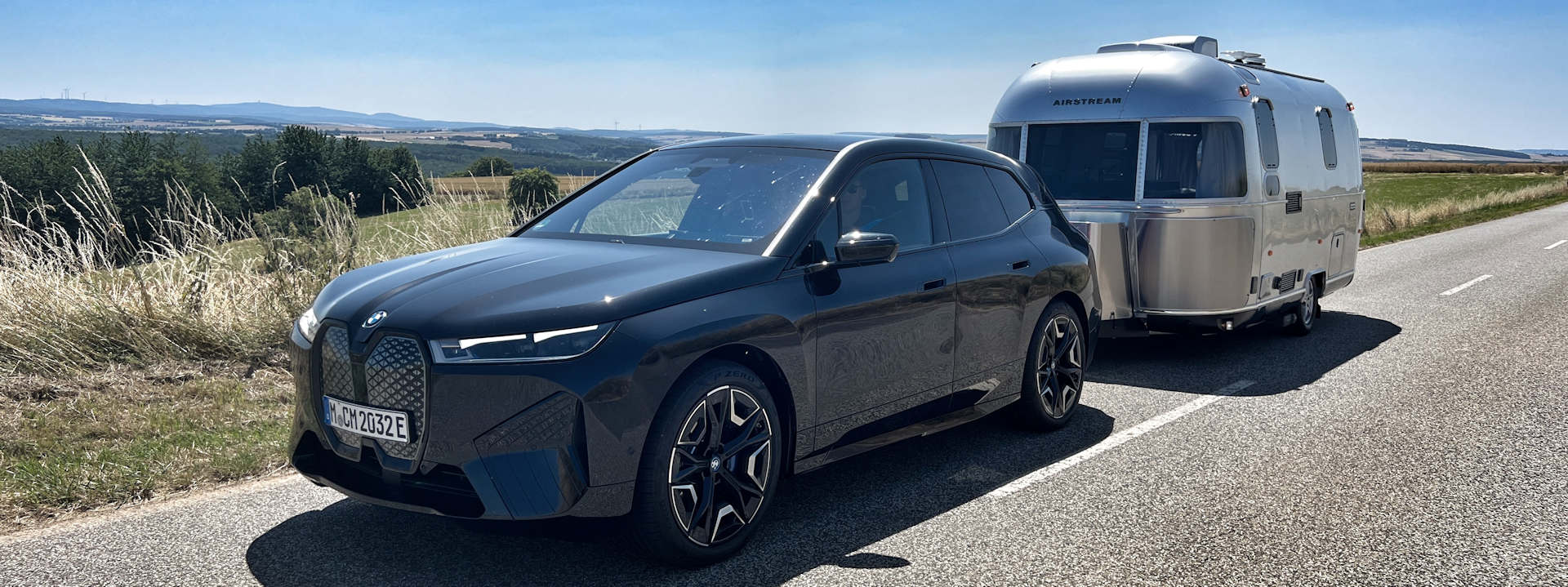
We are particularly interested in how consumption and range develop in trailer operation. We therefore monitor the current consumption, which fluctuates between -50KW and almost 100 KW depending on the incline and decline. As a result, the average consumption and the predicted range also fluctuate quite strongly at first, until a more accurate picture slowly emerges. After about 100 KM over the Westerwald and the Siebengebirge we have a consumption of 38 KW per 100 KM. Not bad at all, especially when you consider that it will be rather less mountainous from now on and the consumption should thus also decrease. With this information, a certain calm also sets in for us and we begin to enjoy the comfortable ride with the BMW iX xDRIVE50 and our Airstream 534. We are fascinated by this unbelievable sovereignty with which we are driving uphill as well as downhill. When overtaking trucks on the Elzer Berg, we hardly miss the usual noise of the combustion engine. Here there is only power and torque. No noise, no delay - just there and available at any time. That can be addictive and you have to be careful not to succumb to the thrill of acceleration again and again and drain the battery senselessly.
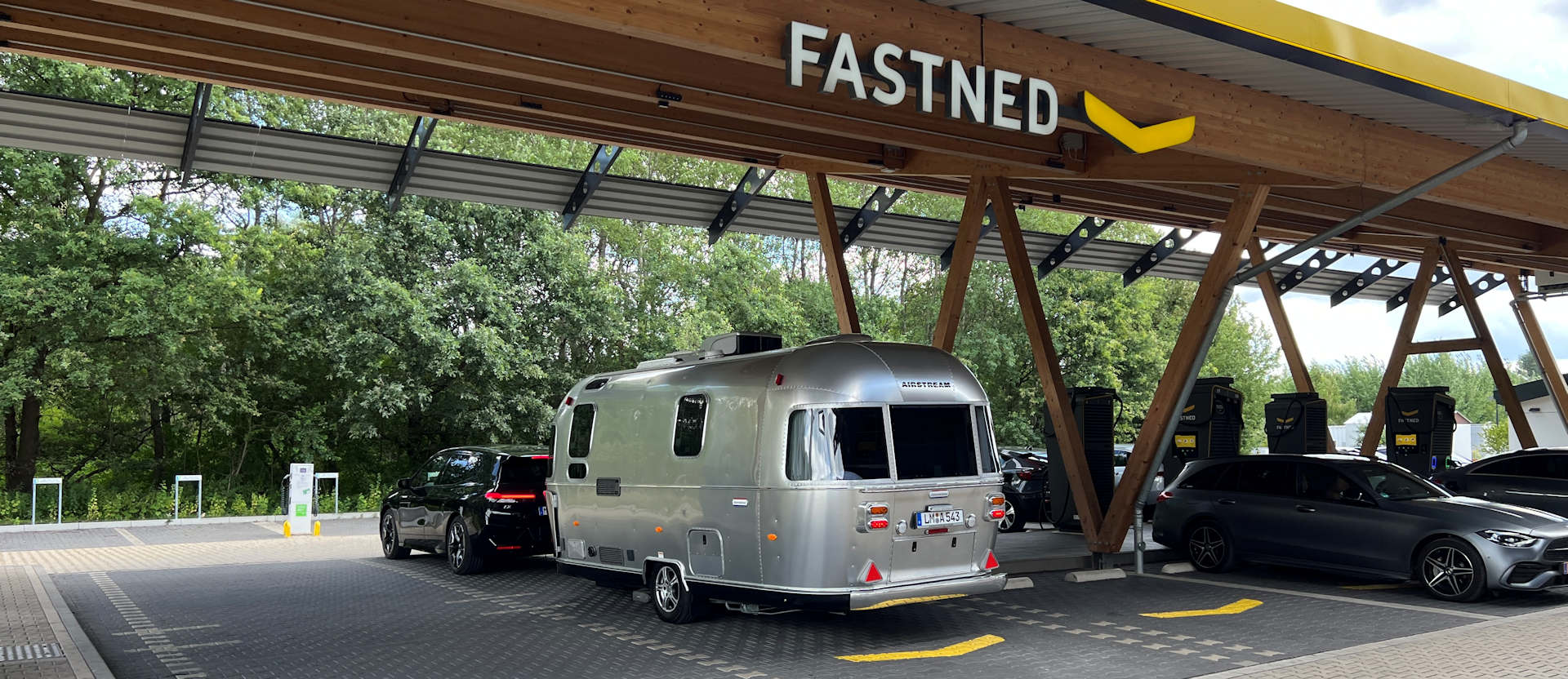
After just under two hours, we reach the charge park in Hilden on the A3 with 49% remaining battery charge. This corresponds to an average consumption of 33.5KW per 100 KM. All three lanes for caravans are free and we can immediately start charging. Charging to 100% would now take almost an hour. Our BMW has a maximum charging power of 194kW. Because this decreases with increasing battery level, one typically charges at the fast charger only up to 80%. So also our plan. We use the time for a quick lunch, order two freshly prepared bowls and enjoy them in the midday sun. When we get back to the car, we realize that our lunch, including preparation and a visit to the restroom, took almost 50 minutes. The charging indicator just jumps to 100% and the charging process is finished. It wasn't planned that way, but it can't do any harm. First realization of the day: Sometimes eating takes longer than loading.
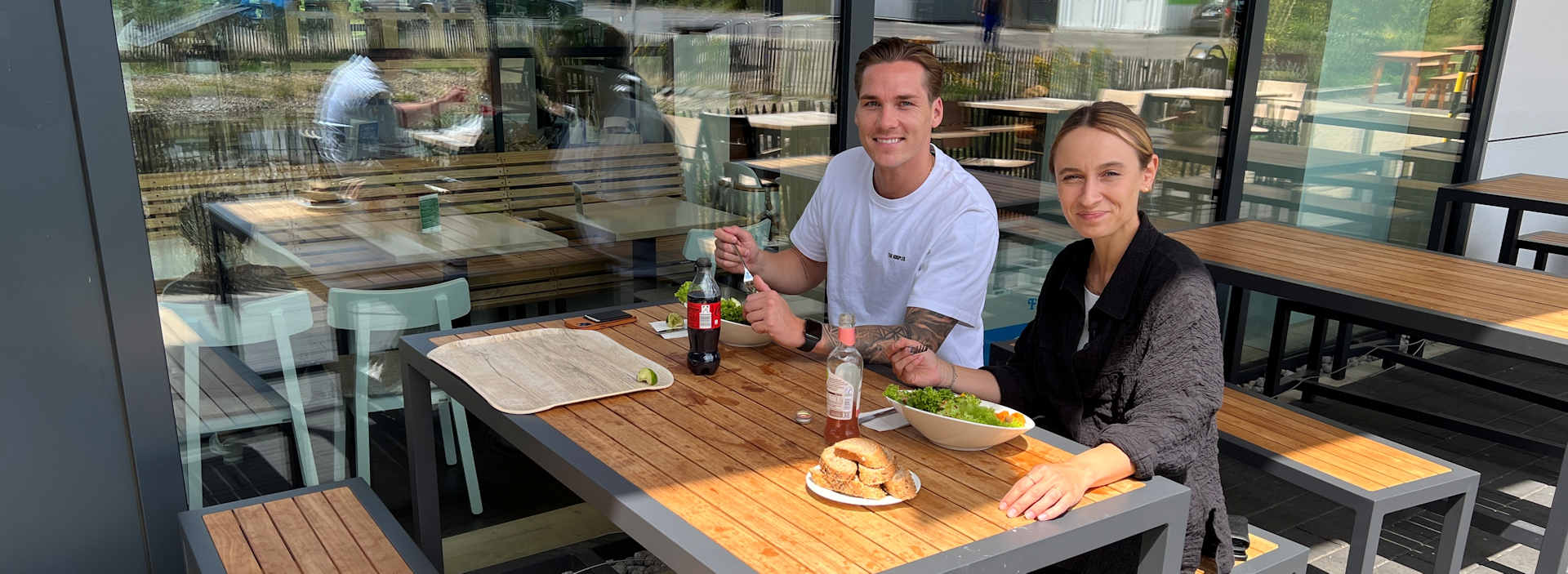
After we initially make good progress on our next leg, we then end up in the Netherlands near Utrecht and Amsterdam in rush hour and spend more than 1.5 hours in a traffic jam. This is quite bearable with the great sound system in the BMW, but raises the following question: Why do so many people have problems with the time lost charging e-cars but completely ignore the time lost in traffic jams? We could have charged the car from 20 to 80% three times in the 1.5 hours, but instead we sit in the well air-conditioned towing vehicle and watch annoyed road users grumbling at each other.
The second insight of the day is that loading is not as stupid as traffic jams, because drivers can at least use the time during loading to work or rest.

In the meantime, we have spent some time in the BMW iX xDRIVE50 and also developed some confidence in the range indication. Due to the lost time in the traffic jam and with the prediction to reach the destination with 13% remaining battery range, we decide to cancel the planned second charging stop and just drive through. So we reach the camping site de Laakens in time before the sundowner and settle down on our dune site. Arriving at the site, the battery range is still 10% or 38 kilometers remaining. The average consumption is given with 36.4 KWH per 100 KM.
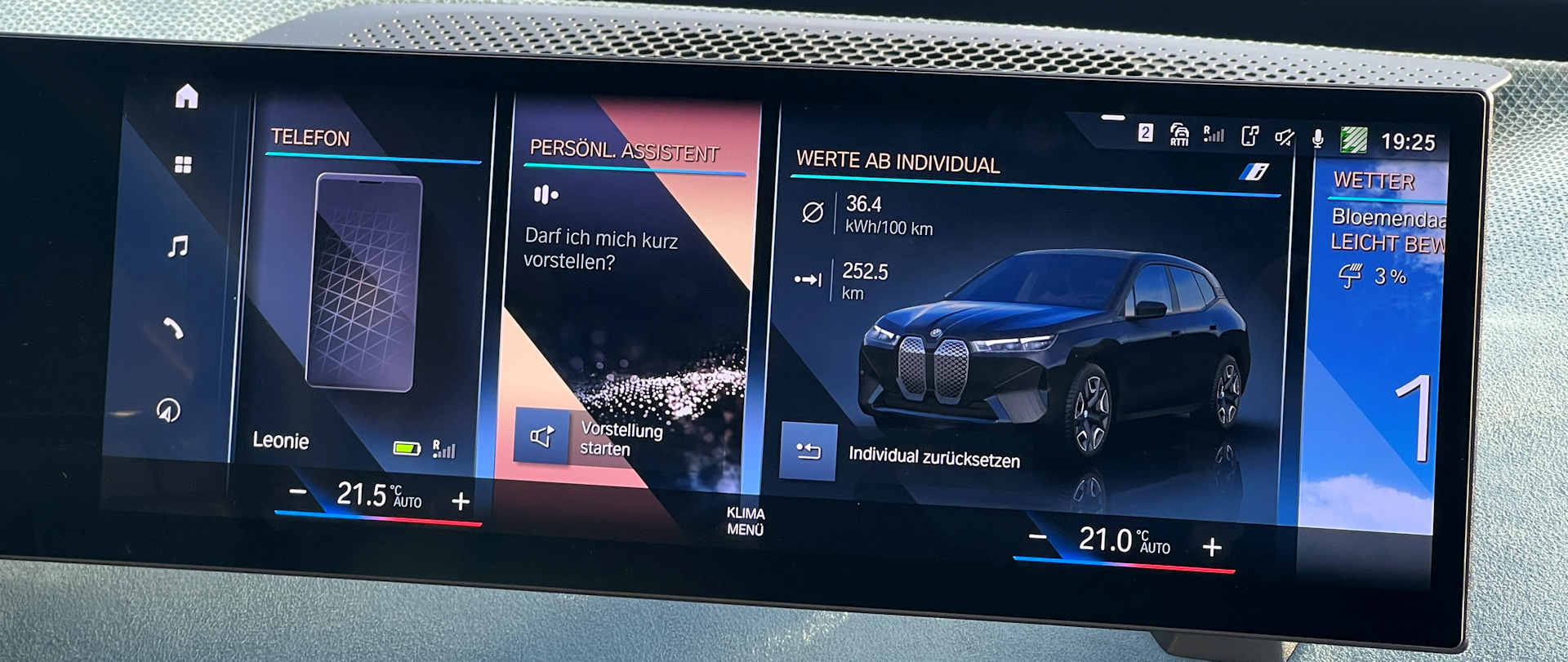
With this remaining range, we can either reach the nearest fast charger the next day or simply charge at one of the four charging stations at the campsite. Now we enjoy the sundowner at the Airstream and tomorrow the endless beaches in front of Zandvoort with the beautiful beach clubs. As far as charging our towing vehicle is concerned, we decide to use the charging station at the campsite. This charges only with 11KW but over night we also reach here the full charge state. Our next destination, the 200 KM distant Roermond on the Maas, we reach without any problems without intermediate charging.
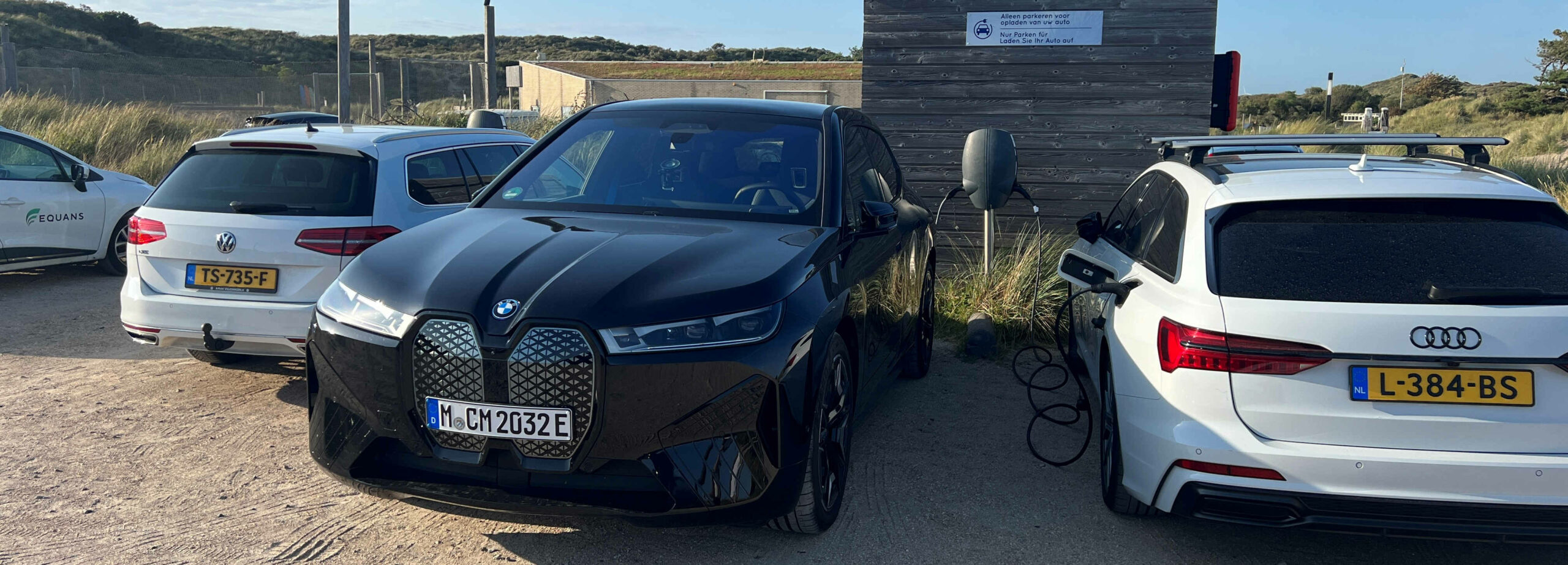
The campsite there "Hattenboer" is quite to our taste, because here you can simply stand freely on the water. Out of season or during the week you can stand on the large meadow all alone. Roermond is a charming little town with a variety of gastronomy and shopping opportunities and within walking distance from the campsite. The well-known brand outlet complements the city center perfectly. We use the visit to the outlet to charge the BMW iX xDRIVE50 for free. This gives us enough range in the battery to arrive back home with a short charging stop on the way back. Our third insight is that e-cars are best charged when you don't need the car. For example, when you're out shopping or at the campsite overnight.

Unfortunately, the time in Roermond flies by very quickly and we start our way back home. This is quite unspectacular with a short stop for charging, which we make again at Seed and Greet in Hilden. You get used to traveling with an electric vehicle incredibly quickly. The much-discussed range anxiety quickly loses its terror as soon as you have a little experience and show a little more composure.
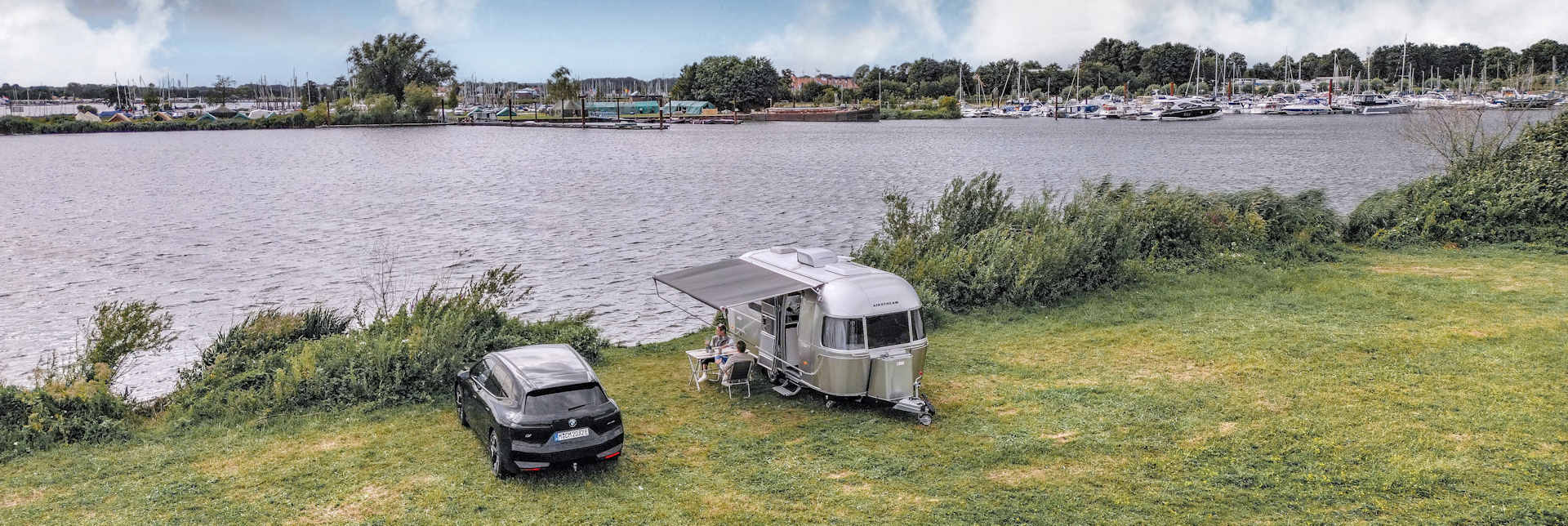
Our conclusion:
This short trip was our first real journey with an electric towing vehicle. Even though we were a bit nervous at the beginning, we really enjoyed the trip and learned a lot. Traveling with an electric tow vehicle is a bit different than with a combustion engine. Driving off at the drop of a hat makes little sense here and produces unnecessary stress on the journey. You should have a plan for the necessary charging stops. There is software like "A better Routeplanner" that supports you in advance. Knowing a few charging stations where you can also charge with a team is absolutely helpful. On our trip, we have already seen some stations where charging with a trailer was possible without any problems. However, at many of them it is only possible with a trailer. Even this is not a big deal for an experienced camper, if there is enough space for it. In our test we found out that we can drive with the BMW iX xDRIVE50 and the Airstream 534 about 250 KM far. More range would be desirable but not available at the moment as far as we know. A break of 30-40 minutes after 3 hours of driving, is for many team drivers but also no problem. After all, you have everything with you to make something to eat or just rest.
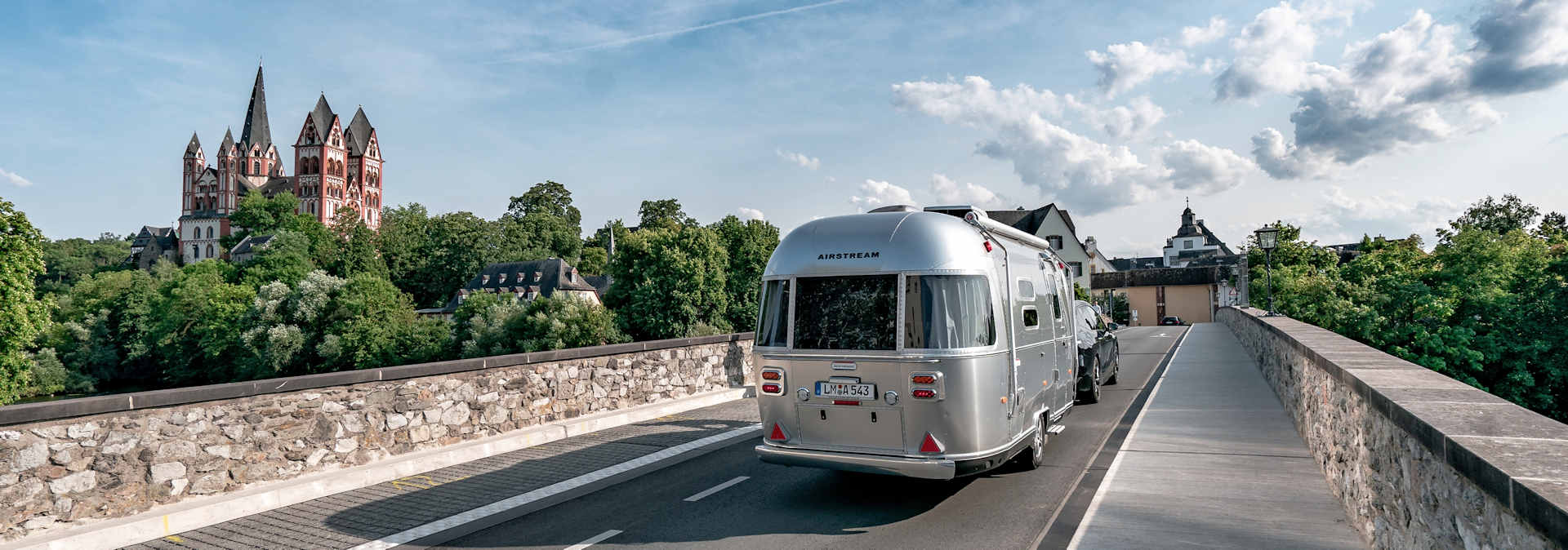
Many Airstream owners are on the road for longer periods of time, see the journey as part of the trip and only drive stages of 100-300 kilometers per day anyway. This way of traveling is already compatible with an electric car like the BMW iX xDRIVE50. For those who drive 800-1000 KM at a stretch and simply want to arrive, it is not yet recommended.
For us, the BMW iX xDRIVE50 is the first electric towing vehicle with which we would like to go on longer trips. It would be nice if it could not only pick up power, but also deliver it to the Airstream when stationary. That way its large battery would greatly increase our self-sufficiency on long road trips. Some vehicles can do this today and also serve as storage for the camper while on the road. E-mobility technology, charging technology and range will continue to evolve in the future. The best part is that each new generation of towing vehicles can also be combined with an existing Airstream. We are excited to see where the journey will take us.

